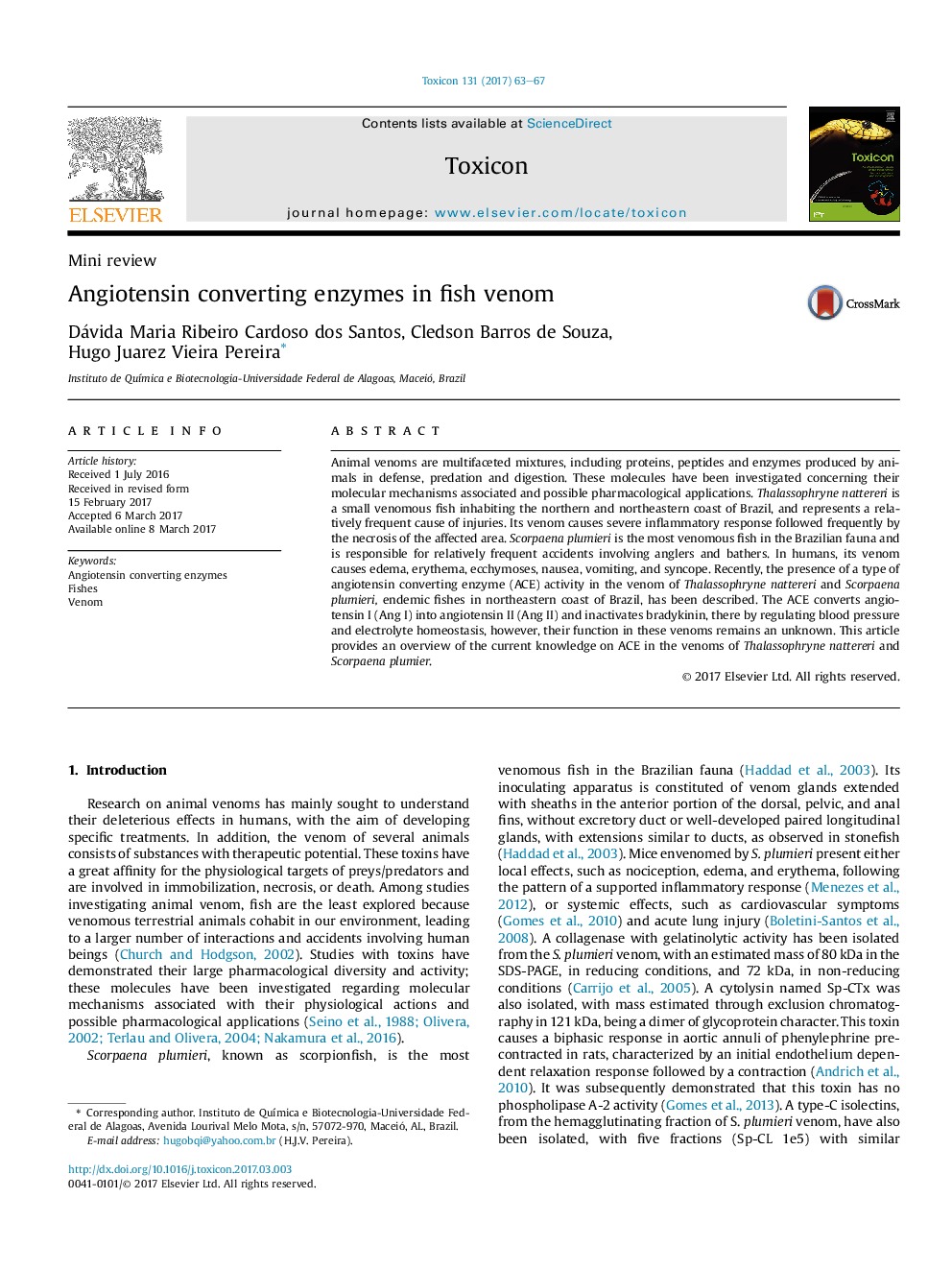| کد مقاله | کد نشریه | سال انتشار | مقاله انگلیسی | نسخه تمام متن |
|---|---|---|---|---|
| 5519244 | 1544105 | 2017 | 5 صفحه PDF | دانلود رایگان |
Animal venoms are multifaceted mixtures, including proteins, peptides and enzymes produced by animals in defense, predation and digestion. These molecules have been investigated concerning their molecular mechanisms associated and possible pharmacological applications. Thalassophryne nattereri is a small venomous fish inhabiting the northern and northeastern coast of Brazil, and represents a relatively frequent cause of injuries. Its venom causes severe inflammatory response followed frequently by the necrosis of the affected area. Scorpaena plumieri is the most venomous fish in the Brazilian fauna and is responsible for relatively frequent accidents involving anglers and bathers. In humans, its venom causes edema, erythema, ecchymoses, nausea, vomiting, and syncope. Recently, the presence of a type of angiotensin converting enzyme (ACE) activity in the venom of Thalassophryne nattereri and Scorpaena plumieri, endemic fishes in northeastern coast of Brazil, has been described. The ACE converts angiotensin I (Ang I) into angiotensin II (Ang II) and inactivates bradykinin, there by regulating blood pressure and electrolyte homeostasis, however, their function in these venoms remains an unknown. This article provides an overview of the current knowledge on ACE in the venoms of Thalassophryne nattereri and Scorpaena plumier.
Journal: Toxicon - Volume 131, 1 June 2017, Pages 63-67
